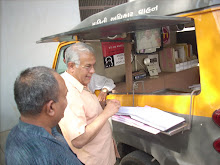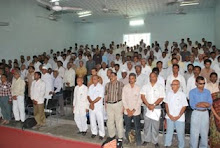Indian
Express: Chandigarh: Tuesday, 2 April 2024.
A whopping over Rs 22.80 crore (Rs 22,80,23,606 ) has been spent on the preservation of a total of 33 protected monuments of heritage importance in Punjab over the past decade (2013-2023), the Archaeological Survey of India (ASI) replied to an RTI query by The Indian Express.
Monuments like Kos minars, which were installed by the Mughals from Agra to Lahore at each Kos (4.17 km) have gone missing. In Punjab, many monuments were lost due to encroachments, illegal constructions, etc. The last Kos minar in India is near Raja Taal in Punjab’s Tarn Taran district.”
An independent study conducted by the Department of Ancient History and Archaeology, Panjab University, however, presents a contrary picture to the ASI’s claims. The study, conducted by PhD scholar Pratibha Sharma and Prof Renu Thakur, on at least half a dozen monuments, highlights the dire need for scientific preservation of these monuments and finding solutions to ensure the co-existence of people settled inside and around these monuments without harming the heritage. The research papers were published in the Punjab Heritage Congress in 2023.
Among the monuments selected for the study were Sarai Amanat Khan in Tarn Taran and the world-famous Takht-i-Akbari in Kalanaur, Gurdaspur district, where Mughal Emperor Abu’l-Fath Jalal-ud-din Muhammad Akbar was coronated on February 14, 1556. Sarai Amanat Khan is located on the Tarn Taran-Attari Road, representing a specimen of glazed tile decoration.
“Today, you can observe occupants residing amidst this once-grand Sarai, which is now an ASI-protected monument. They constructed houses next to the mosque inside the protected monument as well. The mosque is surrounded by a raised platform and a metal fence, but people are living all around it, which is dangerous as the structures can be unstable. Some parts of the Sarai complex show traces of conservation done by the ASI over the years, like the lower half of the gateways, the courtyard in front of the mosque, and the path between the eastern and western gates,” Prof Thakur said.
Chandigarh Superintendent Archaeologist Kamei Athoilu Kabui said, “There is always a scope for improvement despite our best efforts. We cannot simply say that nothing has been done in the past decade. Preserving archaeological monuments is not like preserving and maintaining a house. Preserving centuries-old monuments is a slow and lengthy process. One should also consider the strength of the staff of our department. Less than 100 people are looking after over one hundred monuments in Punjab and Haryana. State governments have their own archaeology departments, which also seek our guidance from time to time. Findings of the studies conducted by scholars and universities are welcome. At least 13, out of 33 monuments, including nine seven Kos minars on the Badshahi highway, which date back to the Mughal period, are in Jalandhar district.”
The research paper on the monument Takht-i-Akbari, published at the Punjab History Congress, reads: “A site such as Takht-i-Akbari should be cared for and promoted. It has the potential to become an important tourist destination…. The monument appears to be blackened, so the monument and the surrounding area can be cleaned and restored. It is apparent that the monument is not frequently visited or maintained. Negligence of the ASI is causing this monument to slowly fade away. Kalanaur once was a major urban centre in the medieval period. It has been described as an auspicious and beautiful place in Akbarnama 17. It was also one of Akbar’s mints 18. A bustling Mughal city, full of Mughal architecture, today only the platform remains. Public awareness can be elevated through community archaeology or specialised education programmes. More targeted actions like issuing pamphlets to the local communities, plays, workshops, etc., can have a more immediate response from the people.”
A whopping over Rs 22.80 crore (Rs 22,80,23,606 ) has been spent on the preservation of a total of 33 protected monuments of heritage importance in Punjab over the past decade (2013-2023), the Archaeological Survey of India (ASI) replied to an RTI query by The Indian Express.
Monuments like Kos minars, which were installed by the Mughals from Agra to Lahore at each Kos (4.17 km) have gone missing. In Punjab, many monuments were lost due to encroachments, illegal constructions, etc. The last Kos minar in India is near Raja Taal in Punjab’s Tarn Taran district.”
An independent study conducted by the Department of Ancient History and Archaeology, Panjab University, however, presents a contrary picture to the ASI’s claims. The study, conducted by PhD scholar Pratibha Sharma and Prof Renu Thakur, on at least half a dozen monuments, highlights the dire need for scientific preservation of these monuments and finding solutions to ensure the co-existence of people settled inside and around these monuments without harming the heritage. The research papers were published in the Punjab Heritage Congress in 2023.
Among the monuments selected for the study were Sarai Amanat Khan in Tarn Taran and the world-famous Takht-i-Akbari in Kalanaur, Gurdaspur district, where Mughal Emperor Abu’l-Fath Jalal-ud-din Muhammad Akbar was coronated on February 14, 1556. Sarai Amanat Khan is located on the Tarn Taran-Attari Road, representing a specimen of glazed tile decoration.
“Today, you can observe occupants residing amidst this once-grand Sarai, which is now an ASI-protected monument. They constructed houses next to the mosque inside the protected monument as well. The mosque is surrounded by a raised platform and a metal fence, but people are living all around it, which is dangerous as the structures can be unstable. Some parts of the Sarai complex show traces of conservation done by the ASI over the years, like the lower half of the gateways, the courtyard in front of the mosque, and the path between the eastern and western gates,” Prof Thakur said.
Chandigarh Superintendent Archaeologist Kamei Athoilu Kabui said, “There is always a scope for improvement despite our best efforts. We cannot simply say that nothing has been done in the past decade. Preserving archaeological monuments is not like preserving and maintaining a house. Preserving centuries-old monuments is a slow and lengthy process. One should also consider the strength of the staff of our department. Less than 100 people are looking after over one hundred monuments in Punjab and Haryana. State governments have their own archaeology departments, which also seek our guidance from time to time. Findings of the studies conducted by scholars and universities are welcome. At least 13, out of 33 monuments, including nine seven Kos minars on the Badshahi highway, which date back to the Mughal period, are in Jalandhar district.”
The research paper on the monument Takht-i-Akbari, published at the Punjab History Congress, reads: “A site such as Takht-i-Akbari should be cared for and promoted. It has the potential to become an important tourist destination…. The monument appears to be blackened, so the monument and the surrounding area can be cleaned and restored. It is apparent that the monument is not frequently visited or maintained. Negligence of the ASI is causing this monument to slowly fade away. Kalanaur once was a major urban centre in the medieval period. It has been described as an auspicious and beautiful place in Akbarnama 17. It was also one of Akbar’s mints 18. A bustling Mughal city, full of Mughal architecture, today only the platform remains. Public awareness can be elevated through community archaeology or specialised education programmes. More targeted actions like issuing pamphlets to the local communities, plays, workshops, etc., can have a more immediate response from the people.”














































































